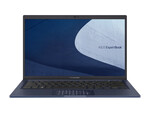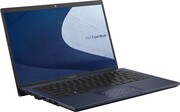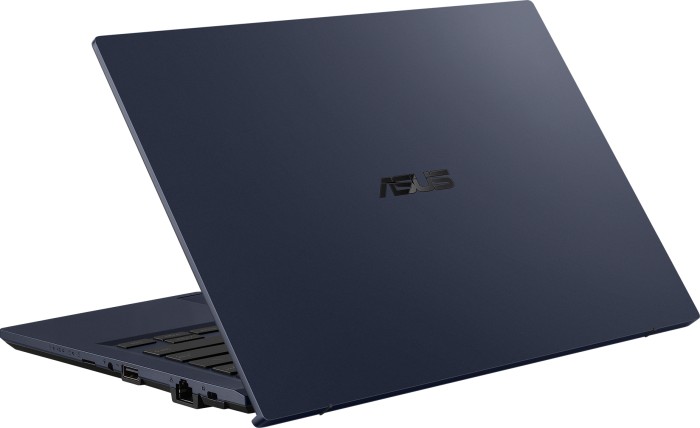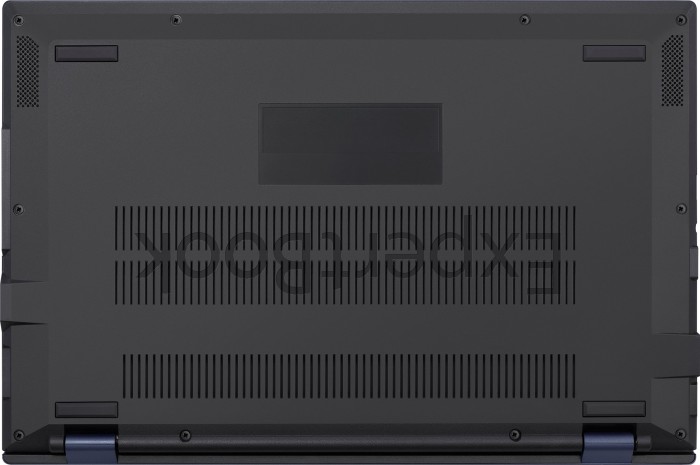Asus ExpertBook B1 B1400CEAE-EB0116R
Specifiche tecniche

Price comparison
recensioni per Asus ExpertBook B1 B1400CEAE-EB0116R
Sorgente: Quotidiano Hardware Upgrade

ASUS ExpertBook B1 B1400 è un notebook destinato al pubblico dei professionisti ma che si caratterizza per un costo d'acquisto contenuto rispetto a quello che tipicamente viene abbinato a modelli di questo tipo. Nella configurazione con processore Intel Core i7-1165G7 provata in questo articolo il prezzo parte da poco più di 800€ ma ASUS ne propone altre con processore Intel Core i5 dal costo ancora più accessibile. Resta in ogni caso un notebook robusto, pensato per essere utilizzato in movimento senza prestare particolare attenzione. E' dotato di certificazione MIL-STD 810H, utilizzando una scocca superiore in lega di alluminio a rinforzo della struttura abbinata a pannello inferiore in plastica. Questo, unitamente alle soluzioni tecniche specifiche di cui è dotato, ne fanno una soluzione notebook indicata ai professionisti e agli utenti business che cercano una soluzione che ben si adatti alle proprie modalità di utilizzo ma che al contempo abbia un costo accessibile nel complesso.
Singola recensione, disponibile online, Lungo, Data: 06/15/2022
recensioni esterne
Sorgente: Laptop Media
 EN→IT
EN→ITWe were really pleasantly surprised by the performance of this machine. Although the internal temperature of the device was pretty high with the “Performance” preset, the clock speeds were pretty much unmatched in the long run. This means you can compile your code faster, or do more things at the same time without the device lagging behind your enthusiasm for work. We have to say that this is mainly thanks to the decently-calculated cooling solution, the ErgoLift mechanism, and the enormous vent on the bottom panel. Now it’s time for some cons. Although the I/O is super wide, it lacks a MicroSD card reader. This is weird because the product images of this laptop clearly show the presence of such a slot. Additionally, we aren’t particularly happy with the rigidity of the plastic base. On the bright side, it houses a pleasant keyboard and a fingerprint reader embedded onto the power button. At the end of the day, ASUS is making a strong statement that it’s intending to battle for the top places in the business laptop market. It won’t be easy for them, but they are clearly on the right track.
Singola recensione, disponibile online, Lunghissimo, Data: 01/27/2022
Commenti
Intel Iris Xe G7 96EUs:
Scheda grafica integrata nei SoC Intel Tiger Lake G4 basati sulla nuova architettura Gen. 12 con 96 EU (Execution Units / Shader Cluster). La frequenza di clock dipende dal modello di processore. I chip Tiger Lake sono prodotti nel moderno processo 10nm+ di Intel.
Ridurre la distanza delle Schede Grafiche per gli utenti che vogliono utilizzare il videogiochi. I nuovi giochi dovrebbero funzionare su queste schede, ma con riduzione dei dettagli e risoluzione mediocre.
>> Ulteriori informazioni le potete trovare nel nostroConfronto delle schede grafiche e nella nostra Lista dei Benchmark.
i7-1165G7:
Processore quad-core a bassa potenza basato su Tiger Lake per computer portatili sottili e leggeri. I quattro cores si aggirano intorno ai 2,8 - 4,7 GHz. Prodotto in 10nm+ alla Intel.
>>Ulteriori informazioni le potete trovare nel nostroConfronto dei processori per portatili.






